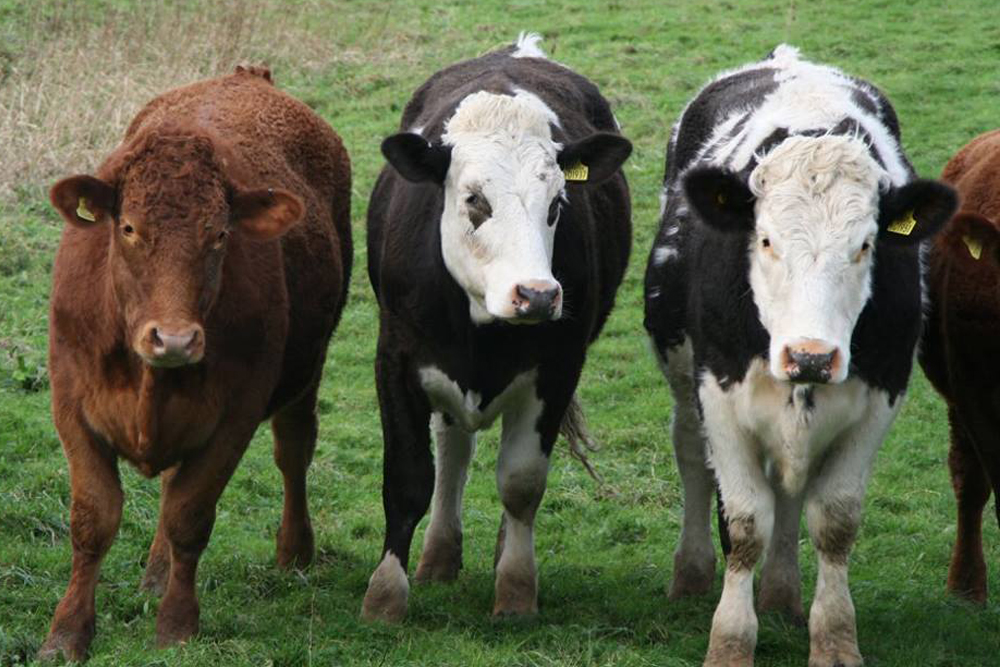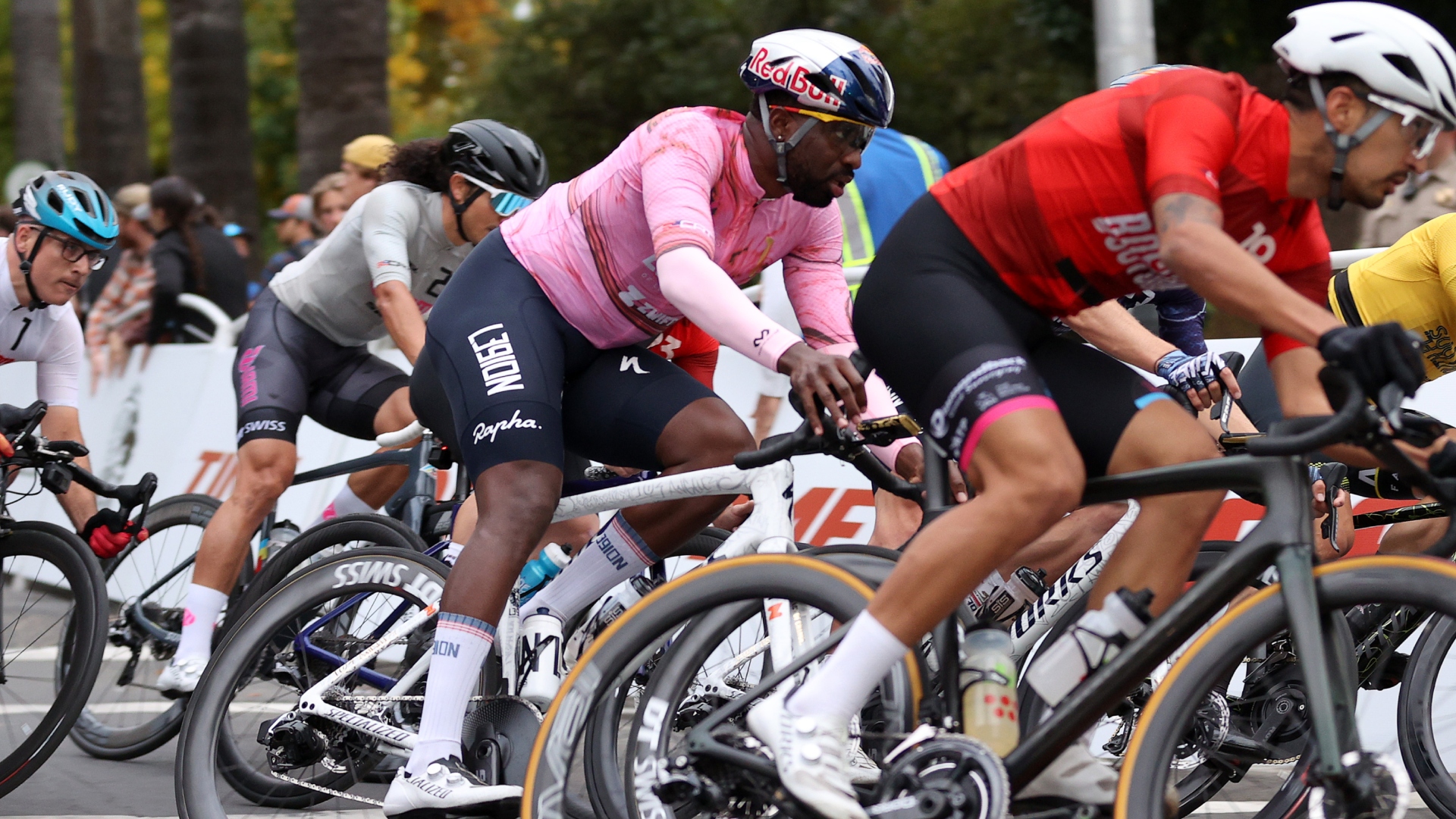Should you eat less meat to boost your cycling?
It’s well known that cutting down on meat benefits the environment, but isn’t animal protein essential for a cyclist’s hard-worked muscles? Anita Bean weighs up the evidence

It’s almost as though meat is going out of fashion in the UK. According to the latest results from NatCen’s British Social Attitudes survey, three in 10 of us have cut back on the stuff in the past year and a further one in 10 are considering doing so.
But can you safely follow suit and cut back on animal-based protein without harming your cycling performance?
>>> How to eat optimally for cycling as you grow older
Confronted with the idea of eating less meat, many cyclists feel torn. On the one hand, consuming fewer animals means reducing our carbon footprint, which nicely complements our clean, green, low-emissions pastime.
On the other, meat is highly valued as a rich source of protein for repairing and developing our regularly shredded leg muscles. Many worry that a diet without meat could fail to provide sufficient protein to support high-level performance. However, the evidence suggests that such fears are groundless.
High fat foods aren't all bad
A 2015 analysis by Australian researchers of eight previous studies comparing the performance of vegetarian athletes with that of meat-eating athletes concluded that well-planned and varied vegetarian diets neither hinder nor improve exercise performance.
Get The Leadout Newsletter
The latest race content, interviews, features, reviews and expert buying guides, direct to your inbox!
This echoes the findings of a previous review of studies at the University of British Columbia, Canada, which stated that well-planned and appropriately supplemented vegetarian diets provide more than enough protein and other nutrients to support athletic training and performance.
>>> Eat like you train: Periodised nutrition
In their 2009 joint position statement on nutrition and athletic performance, the American Dietetic Association, American College of Sports Medicine (ACSM) and Dietitians of Canada ruled that “well-planned vegetarian diets appear to effectively support parameters that influence athletic performance”.
Several studies have found no significant difference in performance, physical fitness (aerobic or anaerobic capacities), limb circumference or strength in vegetarian and non-vegetarian athletes.
In one study, researchers asked runners to follow either a vegetarian or non-vegetarian diet for two weeks. They found no difference in running performance between the two groups, suggesting that giving up meat had no detrimental effect on short-term performance.
Eat well, ride better
Lauren Delany, a performance nutritionist for British Cycling, sees no reason why a vegetarian diet should be detrimental to success on the bike.
“It is possible to meet your nutritional requirements for protein from other sources such as eggs, fish, dairy products such as milk and yoghurt, as well as plant sources like beans, lentils, nuts and seeds,” she says.
>>> Why stress can make you fat – and what to do about it
“Reducing your intake of fatty and processed meats in particular would be advantageous for cyclists, as these contain unwanted additives, a high salt content and have a high energy content from the additional fat.
“Replacing meat with alternatives such as oily fish like salmon could be a good option to increase your omega-3 intake, a healthy fat that is important for recovery and the immune system.”
Getting enough protein

But, given that the protein requirement of athletes is higher than it is among the general population, the big question is whether cyclists can get enough protein from meat-free sources.
“Most cyclists require roughly 1.6g protein per kg body weight per day,” advises researcher, sports nutritionist and Ironman competitor Asker Jeukendrup. “This figure is relatively easily achieved by cyclists who are training hard and thus eating a lot.”
>>> Could cutting carbs help you ride faster?
A 70kg cyclist would need 112g protein daily, while a rider weighing 80kg would need 128g daily. This isn’t a huge amount, but plant-based protein foods are less protein-dense than meat or fish.
For example, an average (125g) chicken breast will deliver 30g protein, about a quarter of a 70kg rider’s daily needs, but to get the same amount in beans, you would have to eat 330g, roughly a whole tin.
Fuel like Marcel Kittel
Do endurance cyclists’ protein requirements differ from those of sprinters? “There’s no evidence that sprinters need more, but since daily requirements are often expressed per kilogram and sprinters tend to be bigger and heavier, their calculated requirements are also higher,” explains Jeukendrup.
When we talk about protein, we are really talking about amino acids. These are the building blocks of proteins, which are bonded together to make hundreds of different proteins.
Many plant sources contain significant amounts of protein, but not all contain as large a quantity of all the essential amino acids as animal sources.
Soya, quinoa and hemp are complete protein sources — meaning they contain all the essential amino acids — but others fall short on one or more amino acids.
Without all the essential amino acids, your body will not be able to synthesise the proteins to optimally repair your muscles after hard training.
Fortunately, by eating a variety of plant sources — nuts, seeds, beans, lentils, soya products (tofu, tempeh), grains (oats, pasta, rice, millet and other grains), bread, quinoa — you can cover all the bases. Rice and beans is a classical combination that will provide a full quota of essential amino acids.
>>> How to use nitrate to boost cycling performance
In reality, the possibilities are endless and you don’t need to combine specific protein foods in each meal to make a complete protein — your body does that naturally from all the foods you eat over the course of a day.
Getting enough protein becomes a lot easier if you distribute your protein intake evenly between meals instead of getting most of it in your evening meal.
New marginal gain?
Researchers at RMIT University in Australia found that consuming 80g protein as four instalments of 20g in different meals resulted in greater muscle protein recovery compared with consuming the same amount of protein either as two lots of 40g or eight lots of 10g.
You get 20g protein from three eggs or 600ml milk or four tablespoons (250g) strained Greek yoghurt.
Alternatively, you can combine three tablespoons (150g) of cooked beans with five tablespoons (250g) cooked pasta; 100g tofu with five tablespoons (250g) noodles; or spread two tablespoons of peanut butter on a couple of slices of toast.
>>> Tinkoff-Saxo chef Hannah Grant explains what it takes to fuel a pro rider
If you’re still worried about getting enough protein, there’s a whole raft of plant protein supplements available: pea protein, hemp protein, soya protein and brown rice protein. Add natural protein from plant foods and you have a perfectly balanced dietary intake.
The iron in plant sources (‘non-haeme’ iron) can be harder to absorb but this can be enhanced by consuming foods or drinks rich in vitamin C, such as red peppers, broccoli, oranges or berries, at the same meal. The citric acid found naturally in fruit and vegetables also promotes iron absorption.
Environmental footprint

The trend away from meat isn’t just about health — although there is compelling evidence that vegetarian diets are associated with a reduced risk of heart disease and certain cancers, as well as increased longevity.
For many, it’s more about reducing their environmental footprint — an issue close to the heart of many cyclists.
You can’t really feel good about your emissions-free mode of transport if your diet effectively belches out tons of carbon each year — research has shown that giving up beef reduces your carbon footprint more than ditching your car in favour of the bike.
>>> How gut health affects cycling performance
Most of us think that greenhouse gas (GHG) emissions and global warming are the result of burning fossil fuels to produce energy but, in fact, livestock agriculture is as much to blame.
The farming of animals contributes an estimated 15 per cent of global emissions — as much as every car, plane, truck and ship in the world.
One of the main GHGs associated with the livestock sector is methane, a product of ruminant digestion and manure storage.
Another is carbon dioxide, which can be largely blamed on deforestation. As land is cleared to graze livestock, fewer trees are available to absorb carbon dioxide, so more of it ends up in the atmosphere.
>>> This is what you have to eat to compete in the Tour de France
According to research from the World Resources Institute published this year, giving up meat completely cuts your diet-related land use and GHG emissions by more than half. But that’s a pretty big shift. Luckily, smaller diet tweaks still have a significant impact.
Poultry and pork have a significantly lower environmental impact than beef or lamb (for various reasons).
So, if you switched one third of your beef or lamb consumption to chicken or pork, that would cut your diet’s environmental impact by nearly 15 per cent. Replacing some chicken and pork with beans, lentils or soya would reduce them further still.
And better still, these ‘low-impact’ foods tend to be cheaper (per gram of protein) than high-impact ones like beef and lamb.
>>> Prevent muscle pain with good cycling nutrition
A 2015 report from Chatham House, the Royal Institute of International Affairs, concluded that a global reduction in meat consumption would keep global warming below the ‘danger level’ of 2˚C.
This echoes the findings of the Carbon Trust, which recommends eating less meat and more plants as a way of safeguarding a healthier and more sustainable future for our planet.
Start the day like a pro
A diet with less meat is undoubtedly more environmentally sustainable, demanding far less land and energy. Better still, fears that it can’t support a hard training regime are unfounded — studies show that going veggie need not have any negative impact on fitness, strength or performance.
Experts agree that a good vegetarian diet provides plenty of protein and other nutrients for endurance cyclists and even for sprinters.
In fact, reducing your meat intake and introducing a greater variety of protein sources in the form of beans, lentils, tofu and nuts is healthier, cheaper, and won’t slow you down.

Thank you for reading 20 articles this month* Join now for unlimited access
Enjoy your first month for just £1 / $1 / €1
*Read 5 free articles per month without a subscription

Join now for unlimited access
Try first month for just £1 / $1 / €1
Jack Elton-Walters hails from the Isle of Wight, and would be quick to tell anyone that it's his favourite place to ride. He has covered a varied range of topics for Cycling Weekly, producing articles focusing on tech, professional racing and cycling culture. He moved on to work for Cyclist Magazine in 2017 where he stayed for four years until going freelance. He now returns to Cycling Weekly from time-to-time to cover racing, review cycling gear and write longer features for print and online.
-
 Can you make a living as an American domestic road racer? A look inside the part-time professionalism of the American road peloton
Can you make a living as an American domestic road racer? A look inside the part-time professionalism of the American road pelotonAfter decades of booms and busts, the American road scene finds itself in a fragile place. We spoke to riders to understand the reality of chasing the dream on home soil
By Logan Jones-Wilkins
-
 5 things I wish I’d known before reviewing the Swytch GO e-bike conversion kit
5 things I wish I’d known before reviewing the Swytch GO e-bike conversion kitSwytch offers an effective, albeit untidy, workaround for e–bike–curious riders. But as prices drop on full e-bikes, its value proposition may be fading
By Anne-Marije Rook